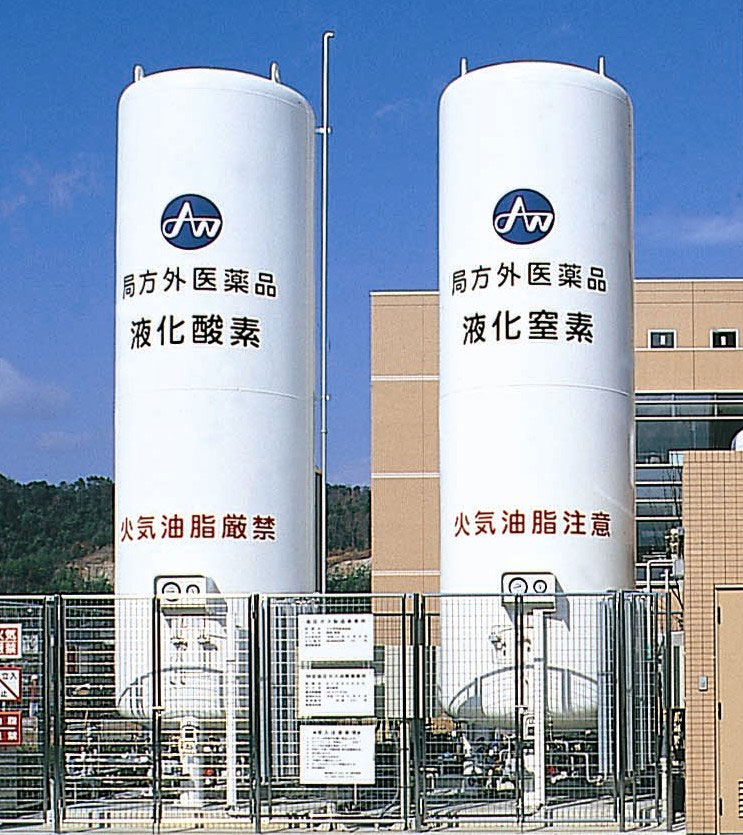Medical oxygen (O2)
In the human body, due to various reasons, the lungs cannot take in enough oxygen from the air, and when there is insufficient oxygen in the arterial blood that living tissues require, hypoxia occurs and biological functions decline. . Medical oxygen improves biological functions by artificially inhaling oxygen in a manner appropriate to each cause.
Air Water Vietnam has obtained permission to manufacture medical oxygen from the Vietnam Ministry of Health. During the spread of coronavirus infection, we supplied medical oxygen to many hospitals.
[Main use]
Inhalation: Inhalation for respiratory diseases, inhalation therapy using artificial respirators, heart-lung machines, etc., hyperbaric oxygen therapy using special equipment
Anesthesia: Supplementary oxygen for normal anesthesia
Synthetic air: artificial air mixed with medical nitrogen
Medical nitrogen (N2)
Medical nitrogen is artificially blended with medical oxygen to supply clean air in hospitals, and is used as an inert gas when manufacturing injections.
In addition, although it is not stated as a medicinal efficacy or effect, gas is used for driving surgical equipment, and liquid nitrogen is used for cryosurgery such as wart removal and cryopreservation of cells, unlike nitrogen gas. There are applications that take advantage of its extremely low temperature properties.
[Main use]
For mechanical drives: gas for driving surgical equipment
Surgery/preservation: For cryosurgery/cryopreservation (removal of warts, preservation of cell freshness, etc.)
Main precautions when handling medical oxygen
Combustibility:
- Do not place near fire or heating.
- Oxygen consuming equipment in medical facilities should be equipped with appropriate fire extinguishing equipment.
- Oils and fats, etc. should not be exposed to oxygen, and oils and fats should not be allowed to come into contact with valves, pressure regulators, etc.

